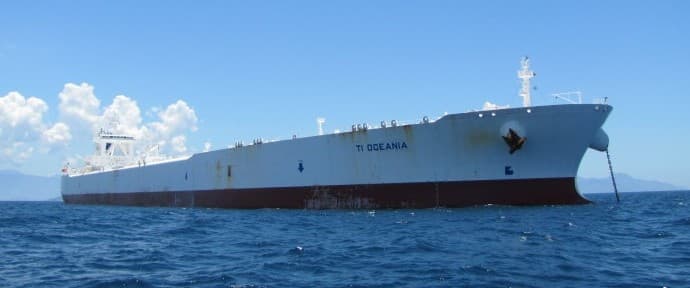Soaring U.S. oil exports have made Corpus Christi the world’s third-largest crude export terminal as ports in the U.S. Gulf Coast are shipping growing volumes of American energy to the international markets, including crude oil, fuels, and LNG.
The Port of Corpus Christi has just announced record-high volumes moved through the Corpus Christi Ship Channel, thanks to rising shipments of crude oil.
The port currently handles more than half of all U.S. crude oil exports and is also the top LNG point of export. Corpus Christi is expanding and deepening the shipping channel to accommodate very large crude carriers (VLCCs) and more traffic, with the port “Moving America’s Energy,” as the port officials say.
Total U.S. crude oil exports have jumped to more than 4 million barrels per day (bpd) this year, per EIA data, up from just 400,000 bpd before the Obama administration repealed 2015 the ban on American crude oil exports. Before 2016, U.S. crude was exported only to Canada. After the ban was lifted, crude oil from the United States was allowed to flow to overseas markets. Since then, America’s crude has become a key commodity in the global oil market.
Surging U.S. crude exports, particularly WTI Midland, have dominated global markets in recent months, with record export volumes and a significant portion being sent to Europe.
U.S. exports soared after the U.S. allowed crude oil exports and after midstream operators seized the opportunity to build pipelines in Texas and Louisiana, leading to the U.S. Gulf Coast export terminals.
So influential has U.S. oil become that WTI Midland was included last year in the Dated Brent part of the Brent benchmark as one of several grades underpinning the contract.
The Port of Corpus Christi has played an important role in helping U.S. crude gain international prominence. It now exports between 2.3 million bpd and 2.4 million bpd of crude, 99% of which goes to foreign markets.
Since the U.S. lifted the export ban, Corpus Christi’s crude oil exports have soared 17 times, TJ Gonzalez, the port’s commercial and business development manager, told FreightWaves this month.
“It’s what has put us on the map, being the No. 3 export gateway for crude oil in the world,” Gonzalez added.
Corpus Christi is preceded only by the Ras Tanura Port in Saudi Arabia and the Basrah oil export port in Iraq.
Ras Tanura, the largest port in the world’s top crude oil exporter, Saudi Arabia, has the capacity to ship 6.5 million bpd of crude, which is equivalent to 7% of the volume of global demand for oil. In total, Ras Tanura Port on the eastern coast of the Kingdom has the capacity to ship 9 million barrels of hydrocarbons per day.
In Iraq, Al Basrah Oil Port is capable of exporting more than 3.2 million bpd, making it the second-largest oil export facility in the world.
And third comes Corpus Christi. The U.S. port last week announced record Q3 volumes, up by 2% from a year earlier, which was the prior highest quarter in the port’s history.
The port saw a 3% annual increase in crude oil shipments, as well as “modest increases in volumes for refined products, liquefied natural gas and dry bulk goods.”
Higher volumes of crude oil have been moved in the first nine months of 2024, as customers moved 2.4 million bpd this year to date, up from 2.3 million bpd in the same period of 2023.
“Through continued investment in our maritime infrastructure, the Port of Corpus Christi and its strong customer base remain well-positioned for future growth,” said Kent Britton, CEO for the Port of Christi.
The port authorities expect the fourth and final phase of the Corpus Christi Ship Channel Improvement Project to be completed in early 2025. Upon completion, the Coastal Bend region will be home to the most improved waterway on the Gulf Coast, from Texas to Florida, with a deeper (54 feet Mean Lower Low Water) and wider (530 feet) ship channel.
The project will allow for sail times of about two hours from the inner harbor to deep water, which would compare with 8 and more hours of similar sail times at the other U.S. Gulf Coast ports, according to Gonzalez.
“Shipping agents like to be able to get the ships into deep water and be able to get them out and get to the next destination quicker,” the executive told FreightWaves.
By Tsvetana Paraskova for Oilprice.com

